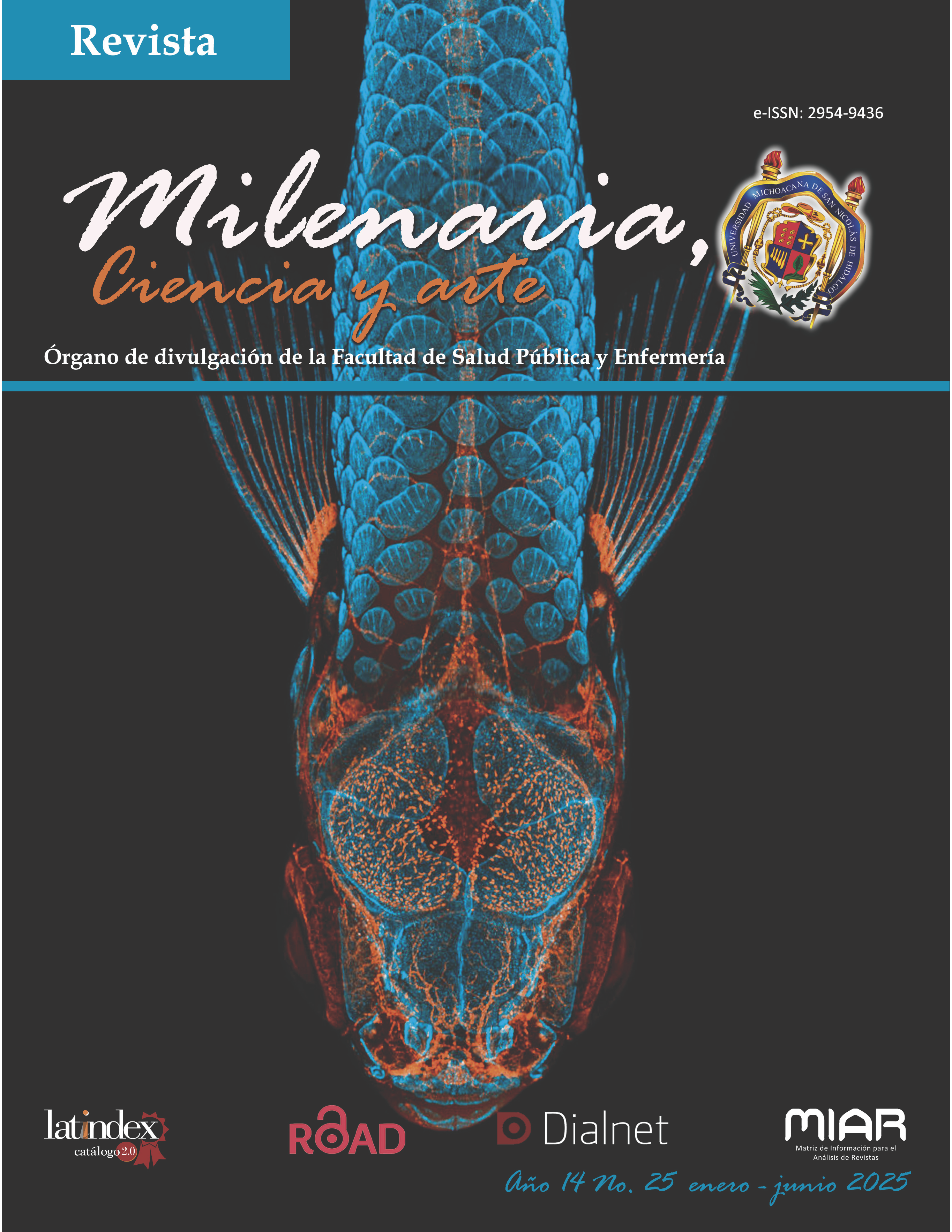Las células, los célulos, les célules. El sexo sí importa en la investigación farmacológica
DOI:
https://doi.org/10.35830/mcya.vi25.641Palabras clave:
equidad de género, guía SAGER, sexo determinado ambientalmenteResumen
Ante los retos éticos que implica la investigación con vertebrados, se ha propuesto el uso de invertebrados parásitos y moscas como modelos alternativos. Sin embargo, esta elección puede implicar una negación de los derechos de estos animales y, al omitir la mención del sexo, se pierde de vista una complejidad que, en muchos casos, supera la del sexo en ratas. En estas especies, además de la definición cromosómica, el sexo está influenciado por factores ambientales. La formación de investigadoras e investigadores debe incluir una perspectiva de equidad de género y sexo, reconociendo las diferencias incluso a nivel celular. Aun dentro del modelo binario, existen múltiples diferencias entre hombres y mujeres, como la densidad y expresión de receptores celulares de progesterona o la menor concentración de ciertas enzimas en uno u otro sexo. No obstante, muchas investigaciones siguen realizándose casi exclusivamente con hombres como sujetos de estudio. Mientras no comprendamos completamente la biología del sexo humano, tanto en modelos de laboratorio como en líneas celulares, la variable “sexo” debería ser incluida en todos los estudios, conforme a los lineamientos SAGER (Sex and Gender Equity in Research). Estos lineamientos proponen que en biología celular, molecular y bioquímica se establezca el sexo cromosómico de la muestra. Sin embargo, nada se dice sobre el sexo determinado ambientalmente en diversas especies animales. Incluir sistemáticamente la variable sexo enriquecería nuestro conocimiento sobre las diferencias y semejanzas biológicas, contribuyendo a reducir las disparidades en los tratamientos médicos. Paradójicamente, un tratamiento puede ser desigual precisamente cuando se aplica de forma igualitaria, sin considerar las diferencias individuales, como es el caso del sexo.
Descargas
Citas
Armstrong-Jr., R., Yamamoto, Ricardo-da-Silva, F.Y., Vidal-dos-Santos, M., Ferreira da Anunciacao, L., Ottens, P.J., Correia, C.J., Pinho Moreira, L. F., Derk Leuvenink, H.G. & Breithaupt-Faloppa, A.C. (2023) Comparison of acute kidney injury following brain death between male and female rats. Clinics 78: 100222, https://doi.org/10.1016/j.clinsp.2023.100222.
Dunn, M.C. Rosenfeld, E.B., Ananth, C.V., Hutchinson-Colas, J., Brandt, J.S. (2023). Gender-inclusive research instructions in author submission guidelines: results of a cross-sectional study of obstetrics and gynecology journals. American Journal of Obstetrics and Gynecology MFM 5:100911, http://dx.doi.org/10.1016/j.ajogmf.2023.100911.
Fernández-Guasti, A.,Gómez Quintanar, b., Reyes, R., Hernández, A., Chavira, R. & Roselli, C.E. (2022). Androgen receptors immunoreactivity in the rat brain of males with same-sex preference. Hormones and Behavior 146: 105279, https://doi.org/10.1016/j.yhbeh.2022.105279.
Fernandez-Garcia, J.M., Carrillo, B., Tezanos, P., Pinos, H. & Collado, P. (2023). Genistein early in life modifies the arcuate nucleus of the hypothalamus morphology differencially in male and female rats. Mollecular and Celullar Endocrinology 570:111933. https://doi.org/10.1016/j.mce.2023.111933.
Green-Fulgham, S.M., Ball, J.B., Kwilasz, A.J., Harland, M.E., Frank, M.G., Dragavon, J.M., Grace, P.M. & Watkins, L.R. (2024). Interleukin-1beta and inflammasome expression in spinal cord following chronic constriction injury in male and female rats, Brain Behavior and Inmunity. 115: 157-168. https://doi.org/10.1016/j.bbi.2023.10.004.
Johnson, A.C. Uhlig, F., Einwag, Z., Cataldo, N. & Erdos, B. (2022). The neuroendocrine stress response impairs hippocampal vascular function and memory in male and female rats, Neurobiology of Disease 168:105707. https://doi.org/10.1016/j.nbd.2022.105717.
Kutash, L.A., Moschonas, E.H., O’Neil,D.A., Craine, T.J., Iouchmanov, A. L., Sunleaf, C.R., Nicholas, M.A., Grobengieser, K. O., Patel, A. K., Toader, M., Ranellone, T.S., Rennelfeldt, P.L., Cheng, J.P., Race, N.S., Kline, A.E., & Bondi, C.O. (2023). Sustained attention performance deficits in the three-choice serial reaction time task in male and female rats after experimental brain trauma. Brain research 1808: 148336, https://doi.org/10.1016/j.brainres.2023.148336
Lee, S.Y., Lee, D.Y., Kang, J.H., Jeong, J.W., Kim, J.H., Kim, H.W., Oh, D.H., Kim, J.M., Shin-Jae Rhim, Kim, W.D., Kim, H.S., Jang, Y.J., Park, Y., Hur, S.J. (2022). Alternative experimental approaches to reduce animal use in biomedical studies. Journal of Drug Delivery Science and Technology, (68), 103131. https://doi.org/10.1016/j.jddst.2022.103131
Maher, E.E., White, A.M., Craig, A., Khatri, S., Kendrick, P.T., Matocha, M. E., Bondy, E.O., Pallem, N., Breakfield, G., Botkins, M., Sweatt, O., Griffin, W.C., Kaplan, B., Weafer, J.J., Beckmann, J.S. & Gipson, C.D. (2023). Synthetic contraceptive hormones occlude the ability of nicotine to reduce ethanol consumption in ovary-intact female rats. Drug and Alcohol Dependence 252: 110983, https://doi.org/10.1016/j.drugalcdep.2023.110983
Minabe, S., Iwata, K., Tsuchida, H., Tsukamura, H. & Ozawa, H. (2021). Effect of diet-induced obesity on kisspeptin-neurokinin B-dynorphin A neurons in the arcuate nucleus and luteinizing hormone secretion in sex hormone-primed male and female rats. Peptides 142: 170546. https://doi.org/10.1016/j.peptides.2021.170546
Minchew, H.M., Ferren, S.L., Christian, S.K., Hu,J., Keselman, P. Brooks, W.M. Andrews, B.T. & Harris, J.L. (2022). Comparing imaging biomarkers of cerebral edema after TBI in young adult male and female rats. Brain research 1789:147945, https://doi.org/10.1016/j.brainres.2022.147945
Ortiz-Avila, O. & García Berumen, C.I. (2024). Modelos animales: Una necesidad en la investigación científica. Milenaria Ciencia y Arte 14:24.
Shen, C.-L., Santos, J., Driver, Z., Bhakta, V., Presto, P., Wang, R., Deshmukh, H., Kiritoshi, T., Yakhnitsa, V., Antenucci, N., Guangchen, J., Neugebauer, V.(2023). Ginger Differentially Mitigates Neuroinflammation and Improves Mitochondrial Function in Male and Female Rats With Neuropathic Pain: Gut-Brain Axis. Current Development in Nutrition 7 Supp 1: 10058, https://doi.org/10.1016/j.cdnut.2023.100582
Yardimci, A., Ertugrul, N.U., Ozgen, A., Ozbeg, G., Ozdede, M.R., Ercan, E.C. & Canpolat, S. (2023). Effects of chronic irisin treatment on brain monoamine levels in the hypothalamic and subcortical nuclei of adult male and female rats: An HPLC-ECD study. Neuroscience Letters 806:137245, https://doi.org/10.1016/j.neulet.2023.137245
Zakiniaeiz, Y. & Potenza, M.N. (2018). Gender-related differences in addiction: a review of human studies. Current Opinion of Behavioral Sciences 23: 171-175. https://doi.org/10.1016/j.cobeha.2018.08.004
Descargas
Publicado
Cómo citar
Número
Sección
Licencia
Derechos de autor 2025 Milenaria, Ciencia y arte

Esta obra está bajo una licencia internacional Creative Commons Atribución-NoComercial-CompartirIgual 4.0.





